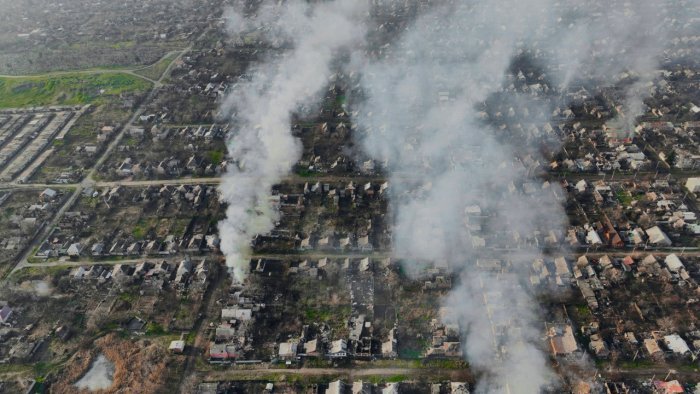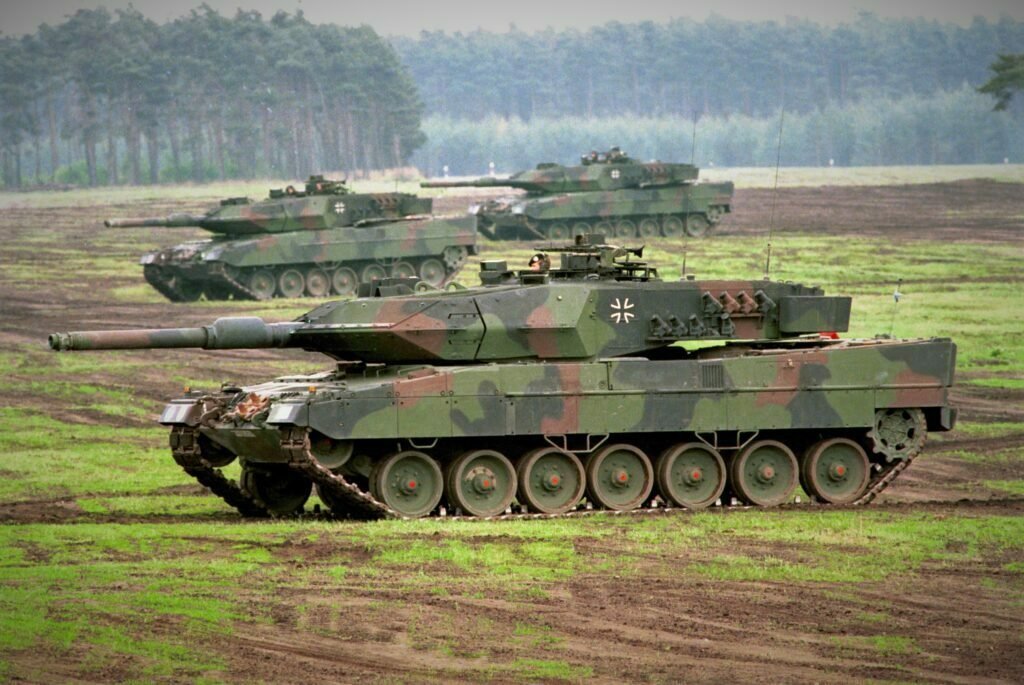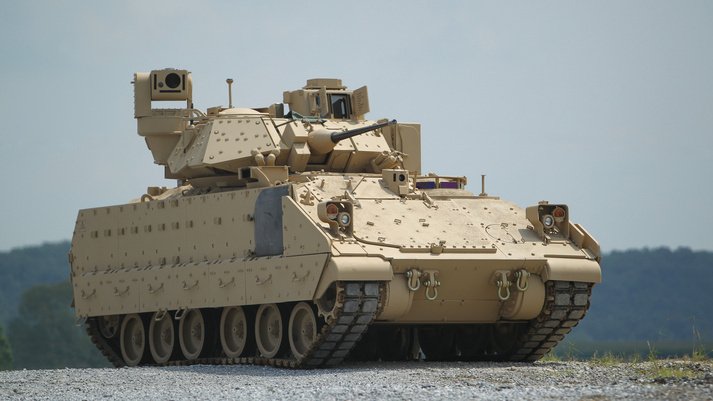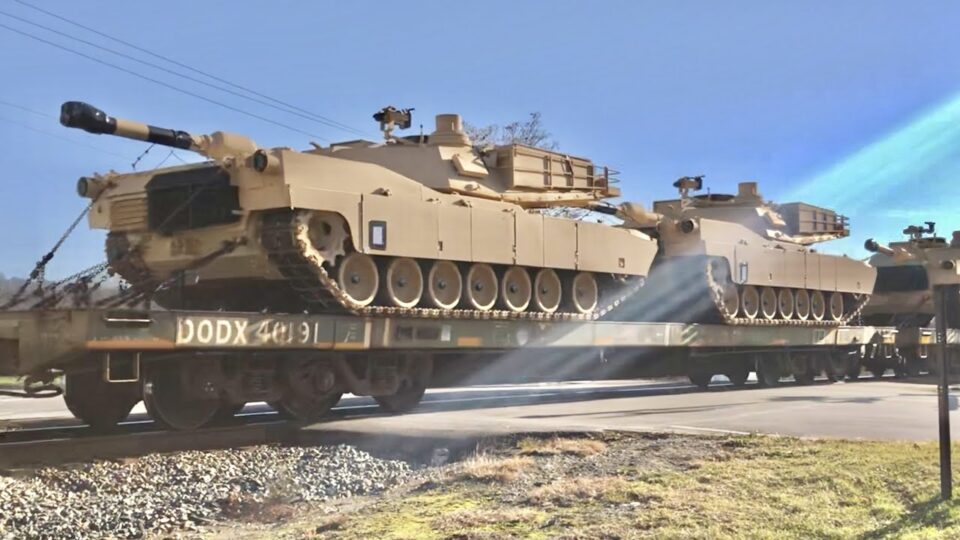Deliveries of weapons from the West in an attack against Russia
As Moscow steps up its campaign in the east, Ukraine’s allies have promised longer-range weapons and hurried to supply tanks and armored vehicles.
In the 49th week of the conflict, Russia has attempted to retake the initiative despite Ukraine having secured new weaponry commitments that will support the beginning of a significant counteroffensive later this year.
In the east, where mercenaries from the Wagner Group controlled the fronts, combat were becoming more intense as Russian regular troops mounted new offensives and gradually gained ground.
The eastern city of Bakhmut, where Ukrainian unit commander Denys Yarolavskyi claimed “super qualified” Russian forces were flooding in over the week, has seen the brunt of the damage. Among them were elite airborne forces, who on January 29 and 30 apparently made modest progress in Bakhmut.
According to Serhiy Cherevaty, spokesman for Ukraine’s eastern army, 42 clashes were fought within 15 kilometers (9 miles) of Bakhmut in the Donetsk region in a single 24-hour period.

On January 27, Russian forces began a new attack against Vuhledar, a town located 30 kilometers (19 miles) to the southwest of the city of Donetsk that is under occupation. Although they were repelled by Ukrainian defenses, geolocated footage indicated that they had taken the settlement of Mykilske on the southern outskirts of Vuhledar.
On January 27, Russian soldiers also carried out a forceful reconnaissance in the neighboring Luhansk region, breaching Ukrainian defenses close to the settlement of Ternova.
They increased cross-border artillery assaults further north. The Sumy and Chernihiv regions, which are remote from the front lines of war, reportedly heard 60 explosions on January 26. The explosions were caused by 120mm shells fired from Russian soil.
On January 26, Russia stepped up its assault, firing 24 Iranian drones and 55 cruise missiles from the air and the sea into Ukraine. The 24 drones and 47 of the missiles were all destroyed by Ukraine’s air defenses.
The remaining missiles did not result in any casualties, but the next day, three people were killed and 14 were injured when Russian S-300 missiles targeted the Donetsk region town of Kostyantynivka.
Weapons pledges are received
Volodymyr Zelenskyy, the president of Ukraine, reiterated his plea for longer-range weapons following the attack on Kostyantynivka.
Long-range missiles are specifically needed by Ukraine in order to exclude the potential that the occupier may position its missile launchers far from the front line and use them to target Ukrainian cities, according to Zelenskyy.
Two US defense sources informed Reuters that a future $2 billion military aid package would include some of the longer-range weaponry Ukraine has requested.
The range of the Ground-Launched Small Diameter Bomb (GLSDB), which the US gave last June, is 150 km (93 miles), is twice that of the high mobility artillery rocket systems (HIMARS). The bombs would place Ukrainian forces within striking distance of the entire and partially occupied Donetsk, Luhansk, Zaporizhia, and Kherson regions.
According to Ukraine’s deputy military intelligence commander Vadym Skibitskyi, Russia has been learning from its mistakes and has moved ammo depots 80–120 km (50–75 miles) from the front line in the Russian region of Rostov, out of the reach of HIMARS rocket fire.

These hubs are the Russian Federation’s centers of gravity, according to Skibitskyi, and they must be attacked in order to interfere with all supply systems.
According to Skibitskyi, longer-ranged weaponry would also assist Ukraine in weakening Russian defense positions before launching a counteroffensive.
Combat tanks
In what may have been a coordinated move with the provision of the GLSDB, the French-Italian Aster 30 surface-to-air missile, which also has a range of up to 150km (93 miles), was to be provided to Ukraine, according to the spokesman for the Ukrainian air force, Yuriy Ignat.
The 300km (186 miles) range Army Tactical Missile Systems (ATACMS) rocket that Ukraine desires is still pending US approval.
On January 27, Mateusz Morawiecki, the prime minister of Poland, said that Poland would supply Ukraine 60 contemporary tanks, including a company of Leopard 2 tanks.
The total number of Western combat tanks that allies have committed to so far has increased to 119. This includes 31 Abrams M1 tanks from the US, 14 Leopard 2 tanks from Germany, and 14 Challenger 2 tanks from the United Kingdom.
Even if they do eventually come, it is still far short of the 300 battle tanks Ukraine has stated it needed to retake all of its occupied regions.
Lost valuable time and lives
The 49th week of the war saw mounting evidence that Russian President Vladimir Putin is preparing a significant counteroffensive, as analysts have long feared.
According to Kremlin officials cited by Bloomberg, Putin is preparing a late winter offensive to regain the initiative.
Putin is still certain that despite its previous setbacks, Russia will succeed because of its greater forces and willingness to take deaths. According to sources close to the Kremlin, the fresh offensive could begin as soon as February or March, according to Bloomberg.
At the end of March, a company of Leopard 2 tanks from Germany and a company of Challenger 2 tanks from the UK are expected to arrive in Ukraine, but a spokesperson for the US Pentagon, Sabrina Singh, stated that Abrams tanks would “take months rather than weeks.”

It has been harshly criticized that the West is being indecisive since a Russian offensive in the next two months could catch Ukrainian forces off guard.
Ground war expert Jack Watling of the Royal United Services Institute claimed that Germany’s insistence that the US pledge Abrams tanks before it pledged Leopards cost Ukraine’s defense valuable time.
“Ukraine has received the worst possible consequence as a result of the German government’s inefficiency and obstructionism. They are receiving three different NATO-designed tanks, each with a different set of intricate maintenance requirements, as opposed to a vast number of a single type of tank. This will delay the deployment of these tanks to the front lines, according to Watling.
According to Watling, Russia is using its attacks in the Donbas to engage Ukrainian soldiers in an exhausting battle and hinder their ability to lead a counteroffensive in the spring.
According to the Institute for the Study of War (ISW), delays in the delivery of Western weapons have made Ukraine’s defenses more vulnerable to counteroffensives.
“The Russians would never have had the chance to reclaim the initiative, as they are presently trying to do,” claimed ISW, if NATO had begun converting Ukraine to Western battle tanks, aircraft, and armored vehicles in early summer 2022.
The muddy spring weather may make Ukraine wait until early summer to undertake a winter offensive if it is ill-prepared to do so, allowing Russia to expand its territorial gains even further, the ISW warned.
Late is better than never.
It seems like people are starting to realize how urgent the issue is. The US Transportation Command announced that the 60 Bradley Fighting Vehicles it had promised to provide to Ukraine last month had already left the country and shared images of them being loaded in Charleston, South Carolina on social media.

As a result of Putin’s apparent plan to intensify the conflict, allies also started to discuss the long-term nature of the war in Ukraine.
The general staff of Ukraine announced that France and Australia were working together to create 155mm projectiles for its artillery.
According to the Ukrainian foreign ministry, German defense company Rheinmetall is prepared to increase tank and artillery manufacturing to suit Ukrainian demand.
In order to replenish supplies given to Ukraine, supply Ukraine with more, and increase reserves for future conflicts, the US is raising artillery shell output by a factor of six, at a level not seen since the Korean War. The US Army was purchasing 14,400 shells each month until September 2022, when it tripled that number, then in January 2023, it increased that number once more to 90,000.
However, certain friends of Ukraine continue to oppose the use of air force. Last week, Austria and Hungary joined the US and Germany in declining to commit to buying F-16 fighter fighters.




